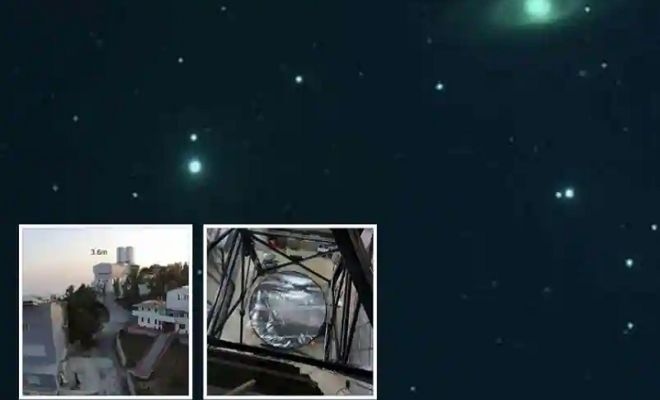World’s 1st Liquid-Mirror Telescope Found in Indian Himalayas

The world’s first and largest liquid mirror telescope, which was recently installed atop Devasthal, a hill in Uttarakhand, will now monitor the sky for transitory or periodic phenomena such as supernovae, gravitational lens, meteoroids, and asteroids.
The Indian Liquid Mirror Telescope (ILMT) will aid in sky surveying, allowing observers to see several galaxies and other celestial sources simply by observing at the strip of sky that passes overhead.
The unique apparatus, which was developed by astronomers from India, Belgium, and Canada, collects and focuses light using a 4m diameter revolving mirror consisting of a thin sheet of liquid mercury.
It’s at the Devasthal Observatory campus of the Aryabhatta Research Institute of Observational Sciences (ARIES), an independent institution under the Department of Science and Technology (DST), Government of India in Nainital district, Uttarakhand, at a height of 2,450 meters.
Related Posts
The three countries’ experts circulated a tank of mercury, a reflecting liquid, until the surface arched into a parabolic form.
It’s perfect for concentrating light. The mercury is shielded from the wind by a thin mylar layer.
The reflected light is processed by a multi-lens optical corrector, which creates sharp images across a wide field of vision. The photos are captured using a large digital camera mounted at the focus.
The director of ARIES, Dipankar Banerjee remarked,
“ILMT is the first liquid-mirror telescope designed exclusively for astronomical observations installed at the Devasthal Observatory of ARIES.”
The ILMT and the Devasthal Optical Telescope are two 4m class telescopes now installed at Devasthal Observatory (DOT).
The Advanced Mechanical and Optical Systems (AMOS) Corporation and the Center Spatial de Liege in Belgium built & designed the telescope.
Who Are The ILMT Collaboration Researchers?
- Researchers from ARIES (India)
- The University of Liege (Belgium)
- The Royal Observatory of Belgium (Belgium)
- Poznan Observatory in Poland (Poland)
- Ulugh Beg Astronomical Institute (Uzbek)
- Academy of Sciences and National University of Uzbekistan
- University of British Columbia
- Laval University (Canada)
- University of Montreal (Canada)
- University of Toronto (Canada)
- York University and University of Victoria (Canada).



